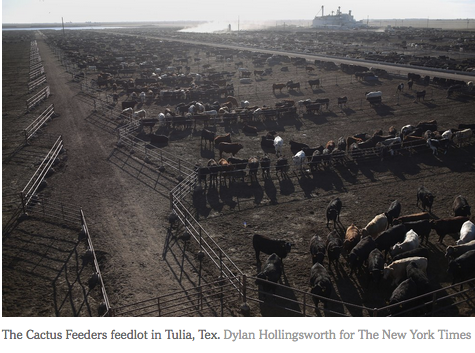Behind Dr. Holland, antibiotics were stacked in large bags rising to his shoulders. Every day, cattle here, whether sick or healthy, are given antibiotics in their feed.
But it’s an increasingly debated practice on industrial farms.
Bacteria resistant to antibiotics turn up in turkey, pork chops and ground beef in the United States; in grocery store chickens in Britain; and at poultry farms in China. Antibiotic residues are found in groundwater, drinking water and streams, and in feedlot manure used as fertilizer.
Some 70 percent to 80 percent of American antibiotic sales go to livestock. In addition to the emergence of resistant disease strains, some microbiologists worry that the proliferation of antibiotics, despite their miraculous health benefits, is having a chaotic impact on microbes in the human gut.
The Cactus feedlot is hamburger central, the middle passage of cattle’s industrial journey. Calves come from farms to be fattened up on corn and grain for several months, and then are shipped out for slaughter and processing.
Cattle, however, evolved to eat grass, and their time on a feedlot causes health complications. Hence the antibiotics. Tylosin controls liver abscesses, and Rumensin, another antibiotic feed additive, fights intestinal disease.
While Cactus has taken steps to limit the use of such drugs, it sees cheap and plentiful hamburgers and steaks as a byproduct of industrialization.




